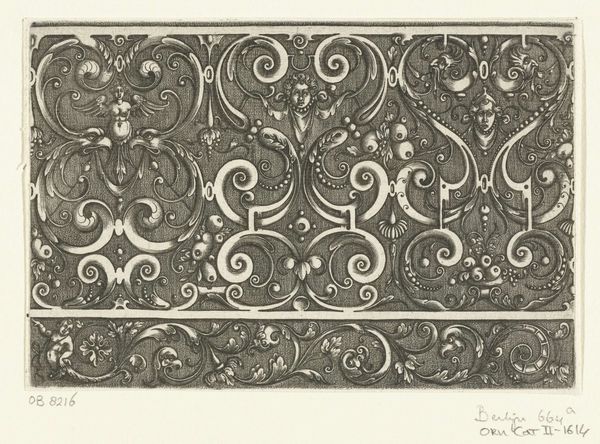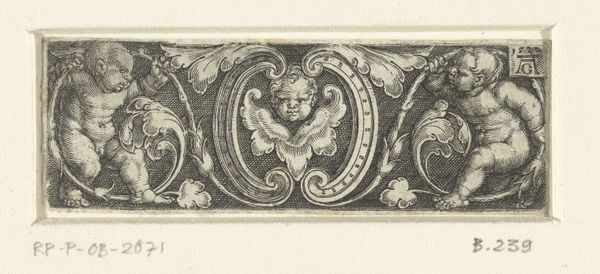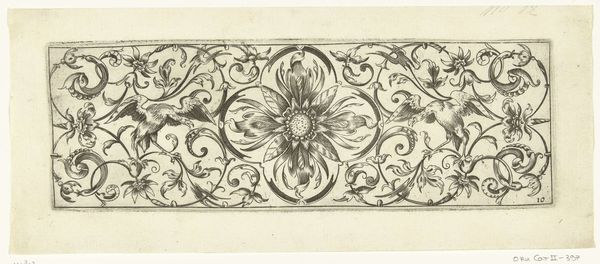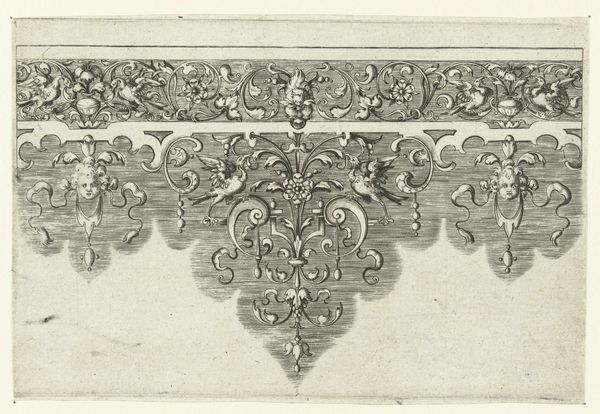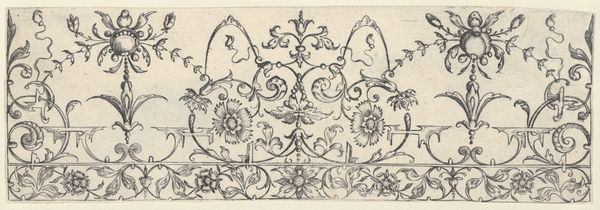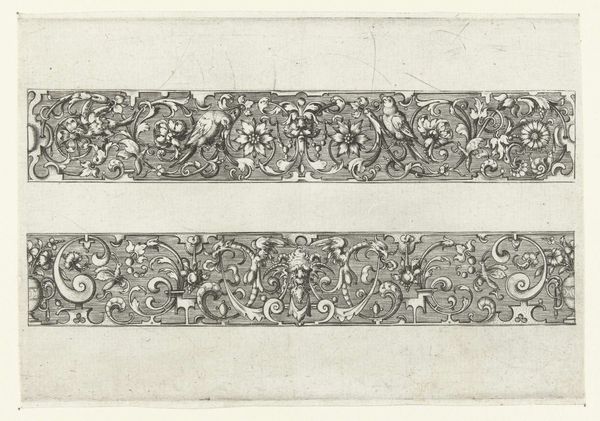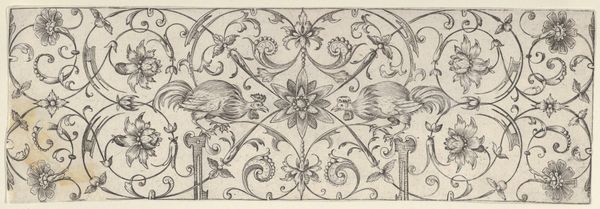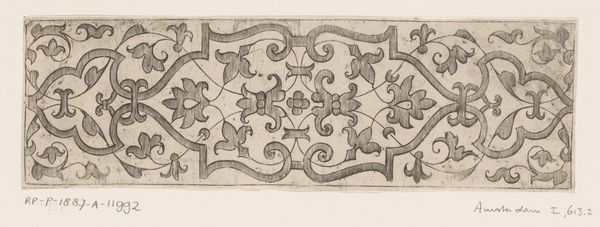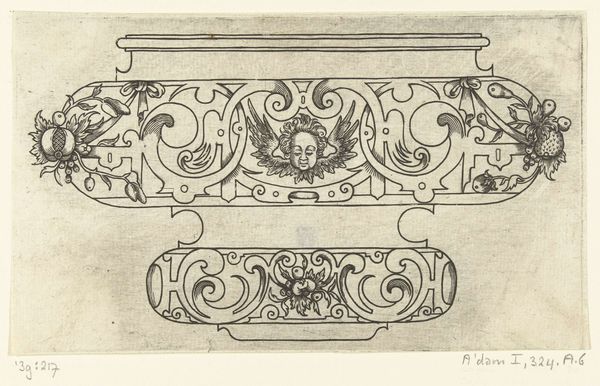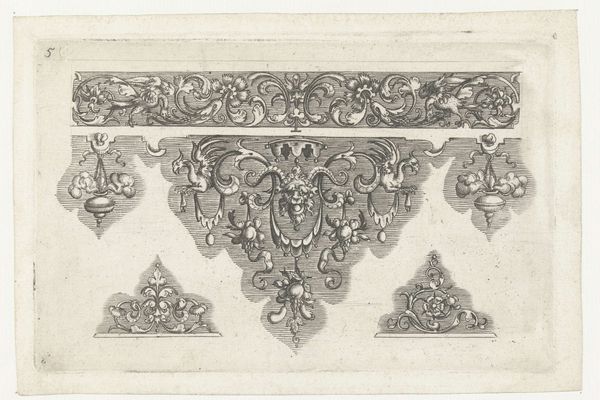
drawing, print, paper, ink
#
drawing
# print
#
paper
#
ink line art
#
11_renaissance
#
ink
#
geometric
#
line
Dimensions: height 47 mm, width 167 mm
Copyright: Rijks Museum: Open Domain
Editor: This ink drawing, "Twee friezen met bladranken boven elkaar," which translates to "Two friezes with leaf tendrils above each other", is estimated to have been created sometime between 1500 and 1600 by an anonymous artist. There's a rhythmic repetition of floral motifs; it’s beautiful, but it makes me wonder, how do you interpret its place within its time? Curator: It's interesting to consider how ornament, especially repeating patterns like these leaf tendrils, operated within Renaissance visual culture. During this period, we see a growing emphasis on classical forms alongside emerging humanist philosophies. Now, given this piece seems destined for some decorative purpose, do you think its purpose was simply aesthetic? Editor: I hadn't thought about it, but maybe it was about more than beauty alone. What other roles might ornament have played back then? Curator: Well, consider that ornament often signified status and power. Geometric patterns and organic motifs could also represent the natural world under human control, reflecting a worldview where humans sought to order their environment. It's about imposing an artificial order on the chaos of nature. Does knowing that shift how you see the frieze? Editor: It does. It suggests these aren’t just decorations; they communicate something about human dominance. Curator: Precisely! And considering the lack of identifying marks, its creation may have been more about reinforcing shared values within a community than about individual expression. It is likely to have been for the benefit of the establishment at that time. Editor: So much for such a seemingly simple drawing to communicate! Curator: Absolutely. It shows how the visual language of a time is woven into these patterns. Editor: I’ll never look at a simple pattern the same way. Curator: Good, because it is always speaking, you only have to listen.
Comments
No comments
Be the first to comment and join the conversation on the ultimate creative platform.

